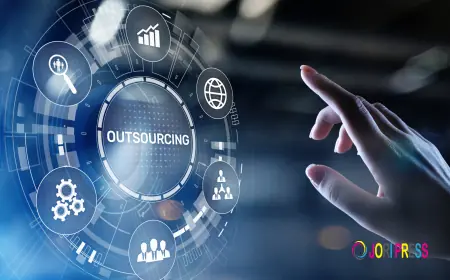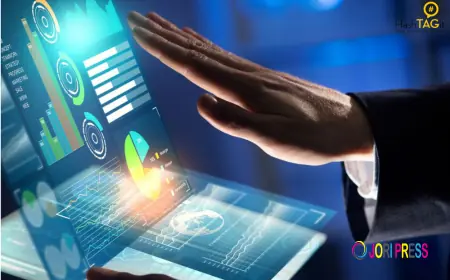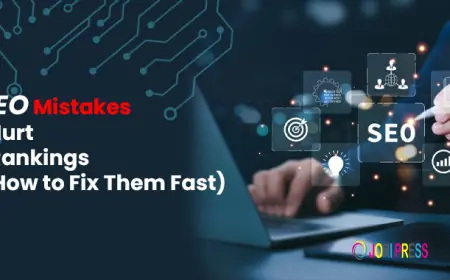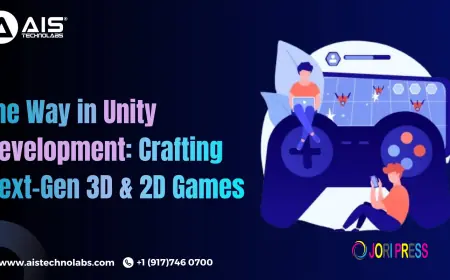How to Build AI Chatbot That Understands Customers Better Than Humans
Learn how to build AI chatbot solutions that leverage NLP and machine learning to understand customers more deeply than humans, delivering smarter and empathetic interactions.

In the modern digital era, customer experience defines the success of a business. From retail to healthcare, organizations are striving to provide faster, more personalized, and human-like customer interactions. Traditional customer service models, however, are limited by human capacity and response time. This is where chatbot development comes into play, transforming the way businesses engage with their customers. But the goal is no longer to just answer questions—it’s about creating chatbots that truly understand customers better than humans. By exploring how to develop AI chatbot solutions that harness artificial intelligence, natural language processing, and machine learning, businesses can deliver customer interactions that are seamless, empathetic, and efficient.
The Evolution of Chatbot Development
Chatbot development started with simple rule-based systems that relied on pre-set commands and limited conversational flows. While effective for basic FAQs, these systems struggled with complex or unstructured queries. The rise of AI development changed this landscape completely. With advancements in natural language understanding (NLU) and natural language generation (NLG), chatbots evolved into intelligent assistants capable of comprehending context, analyzing intent, and adapting to user behavior.
Today, businesses are focusing on ai chatbot development not just as a customer service tool but as a cornerstone of digital transformation. AI-powered chatbots are integrated into websites, mobile apps, and enterprise systems, redefining how companies interact with both customers and employees.
Why AI Chatbot Development Matters for Businesses
Modern businesses thrive on engagement. Customers expect instant responses, personalized recommendations, and smooth digital experiences. AI chatbot development enables companies to meet these expectations while lowering costs and scaling globally.
In web development, chatbots enhance websites by reducing bounce rates and supporting lead generation. In custom software development, chatbots act as internal assistants that help employees access information, automate tasks, and improve productivity. Enterprises leveraging custom AI chatbot development can align chatbots with their brand voice, integrate them into CRMs, and optimize customer journeys.
When designed well, AI chatbots outperform humans in several aspects. They process information faster, provide consistent answers, and operate 24/7 without fatigue. This makes how to build AI chatbot systems a strategic priority for industries ranging from e-commerce and banking to education and logistics.
How to Build AI Chatbot That Truly Understands Customers
Developing an AI chatbot that understands customers better than humans requires a thoughtful process that blends technology with empathy. It begins with understanding customer needs and mapping out conversational flows. Developers must then train the chatbot on relevant datasets, ensuring it learns industry-specific language, slang, and context.
The core elements of how to build AI chatbot include:
-
Data Collection and Training: AI chatbots require extensive datasets to understand customer queries. This includes FAQs, past customer interactions, and real-world conversations.
-
Integration of NLP: Natural language processing enables the chatbot to interpret and analyze human language. It ensures the chatbot understands intent even when phrased in multiple ways.
-
Machine Learning Models: AI algorithms allow chatbots to learn from past conversations and continuously improve. Over time, the chatbot becomes more accurate and capable of providing personalized responses.
-
System Integration: In custom AI chatbot development, integration with CRMs, ERPs, or payment gateways is essential for executing tasks beyond just answering questions.
-
Continuous Optimization: Chatbots must be tested, monitored, and optimized regularly to remain effective and aligned with evolving customer needs.
By following this process, businesses can create AI chatbots that mimic human-like conversations while exceeding human performance in speed and accuracy.
Custom AI Chatbot Development for Personalized Experiences
One of the biggest advantages of custom AI chatbot development is personalization. Every industry has unique challenges, and generic chatbot solutions rarely meet specific needs. For instance, in healthcare, chatbots need to handle sensitive information securely while providing accurate medical guidance. In e-commerce, chatbots should offer product recommendations, track orders, and simplify checkout processes.
With custom AI chatbot development, businesses can design chatbots that reflect their brand identity, understand customer behavior, and deliver tailored solutions. This level of personalization enhances customer trust and loyalty, making chatbots more effective than traditional human-driven support systems.
The Role of AI Development and AI Agent Development
Behind every advanced chatbot lies AI development. By leveraging machine learning models, neural networks, and NLP frameworks, chatbots can analyze vast amounts of data and deliver context-aware responses. Unlike traditional bots, AI-powered systems improve over time, ensuring that conversations become more accurate and personalized.
AI agent development takes things further by creating autonomous digital agents capable of decision-making and proactive engagement. For example, an AI agent can detect patterns in customer behavior, anticipate issues, and offer solutions before the customer even asks. When integrated into ai chatbot development, these agents transform chatbots into powerful business tools that go beyond reactive support.
Best Practices in How to Develop AI Chatbot
When exploring how to develop AI chatbot solutions, businesses should follow best practices to maximize effectiveness. A strong foundation starts with defining the chatbot’s objectives—whether it’s for customer support, lead generation, or task automation. Conversation design must prioritize natural, human-like interactions to avoid robotic or repetitive responses.
Another best practice is scalability. A chatbot designed for a small customer base should be capable of scaling up as the business grows. Integration with cloud infrastructure and modular development ensures that the chatbot can handle thousands of concurrent interactions without performance issues.
Security and compliance are also critical. Since chatbots handle sensitive data, developers must ensure compliance with regulations like GDPR or HIPAA. In industries like finance and healthcare, custom AI chatbot development solutions must incorporate strict encryption and data handling protocols.
How AI Chatbots Surpass Human Understanding
Humans bring empathy and emotional intelligence to conversations, but AI chatbots surpass them in several ways. They can process large amounts of data instantly, analyze patterns in customer behavior, and deliver consistent support without errors. Moreover, AI chatbots can engage with customers across time zones and languages, something human agents cannot achieve at scale.
Through ai chatbot development, businesses can design chatbots that not only answer questions but also predict customer needs. For example, an AI chatbot can analyze browsing history and recommend relevant products before the customer even adds them to the cart. This proactive approach mirrors human intuition but with greater accuracy and efficiency.
Chatbot Development in Web and Custom Software Solutions
Incorporating chatbots into web development has become a necessity. Websites equipped with AI chatbots provide users with instant support, improving engagement and reducing abandonment rates. Similarly, in custom software development, chatbots serve as interactive assistants that make complex systems more user-friendly.
By embedding chatbot development into enterprise applications, businesses can streamline workflows, improve data access, and automate repetitive tasks. This integration enhances both customer-facing and internal operations, creating a seamless digital ecosystem.
The Future of AI Chatbot Development
The future of ai chatbot development lies in hyper-personalization, multimodal interactions, and predictive intelligence. Chatbots will no longer just respond—they will initiate conversations, analyze customer sentiment, and provide recommendations in real time. With the integration of generative AI, chatbots will also create tailored content, such as personalized emails or product descriptions.
AI agent development will continue to evolve, enabling chatbots to function as digital employees. These autonomous systems will handle scheduling, decision-making, and even negotiations, making them indispensable to modern businesses.
As more companies explore how to build AI chatbot systems, the focus will shift from automation to augmentation—enhancing human capabilities with AI-driven insights and support.
Challenges in Building AI Chatbots
Despite their potential, building advanced AI chatbots comes with challenges. Training chatbots requires high-quality datasets, and poor training can lead to inaccurate or biased responses. Complex, multi-turn conversations are still difficult for many systems to manage effectively.
Another challenge is balancing automation with human touch. While AI chatbots can handle most queries, some situations still require human empathy and judgment. Successful chatbot development ensures a smooth transition between bots and human agents when necessary.
Final Thoughts on How to Build AI Chatbot
The journey of chatbot development has moved far beyond simple automation. Today, businesses are designing AI-powered assistants that understand customers better than humans by combining natural language processing, machine learning, and industry-specific customization.
For organizations exploring how to build AI chatbot systems, success lies in aligning technology with customer expectations. Investing in custom AI chatbot development ensures that businesses can deliver unique, brand-specific experiences while leveraging the scalability and efficiency of AI.
For developers eager to experiment, it’s even possible to build a chatbot using Python, opening the door to hands-on innovation in conversational AI. As businesses and developers continue to embrace ai chatbot development, the future promises a world where chatbots not only match but surpass human-level customer understanding.
What's Your Reaction?
 Like
0
Like
0
 Dislike
0
Dislike
0
 Love
0
Love
0
 Funny
0
Funny
0
 Angry
0
Angry
0
 Sad
0
Sad
0
 Wow
0
Wow
0















































